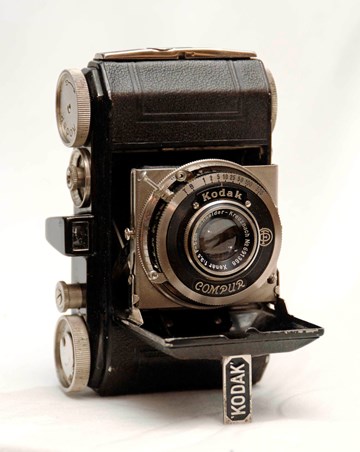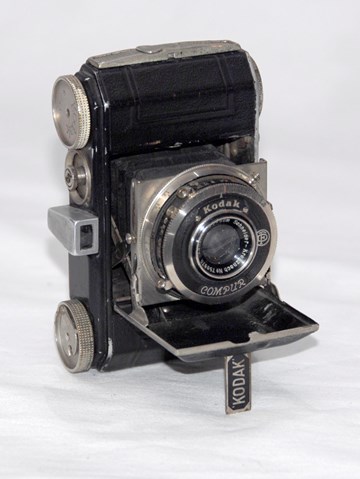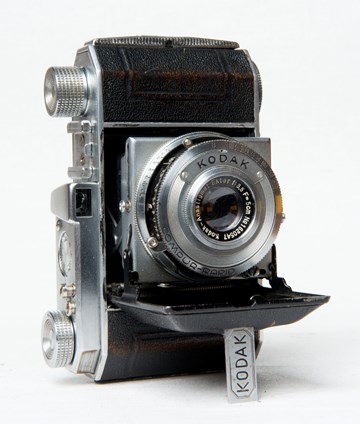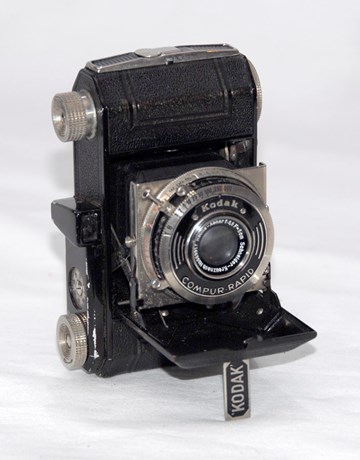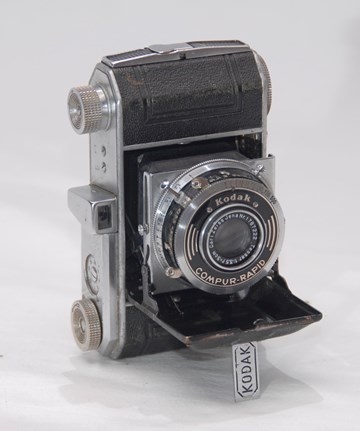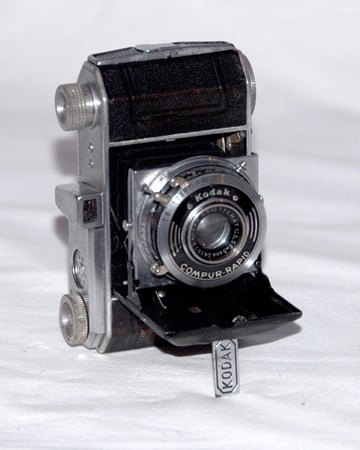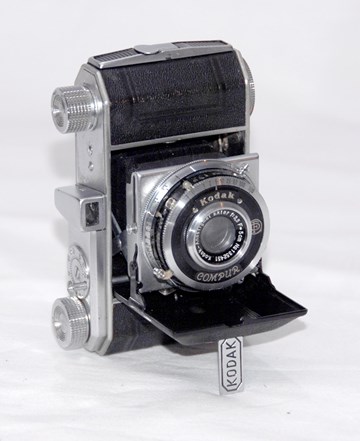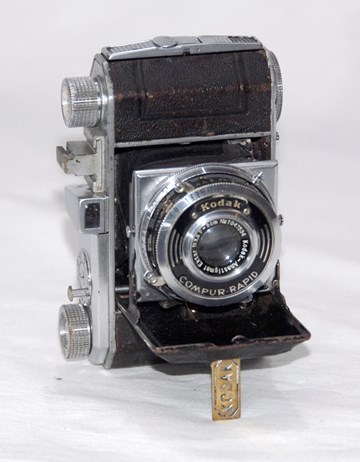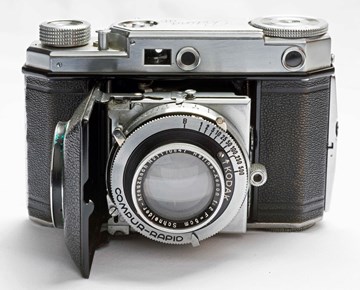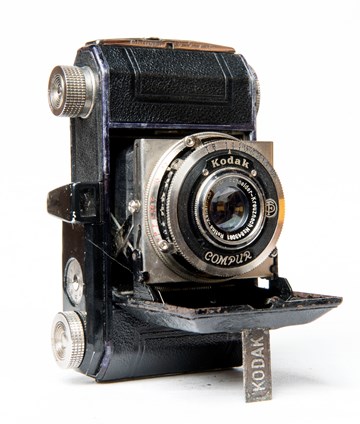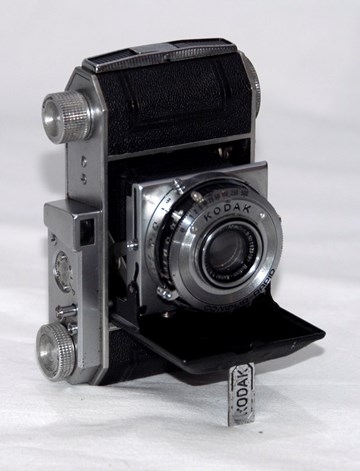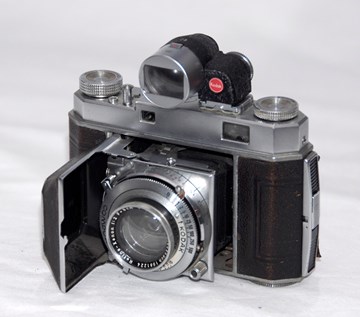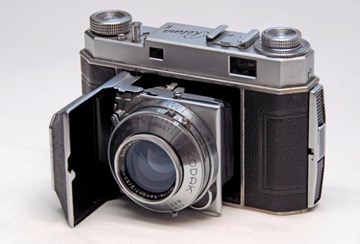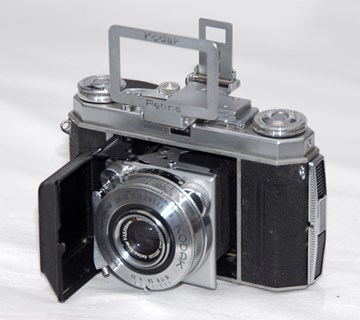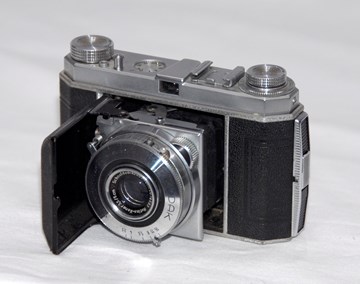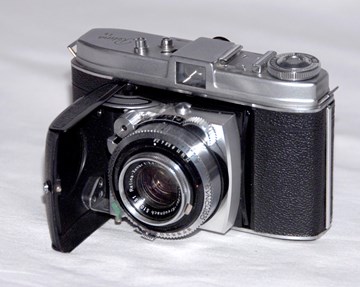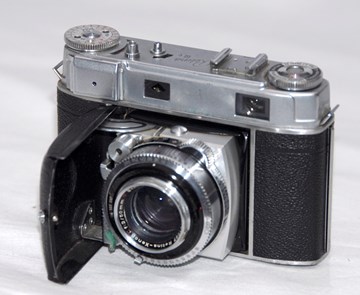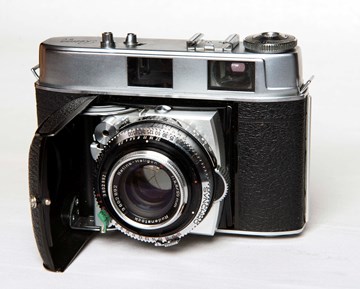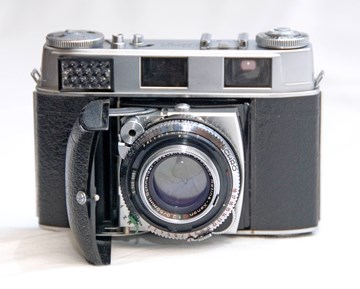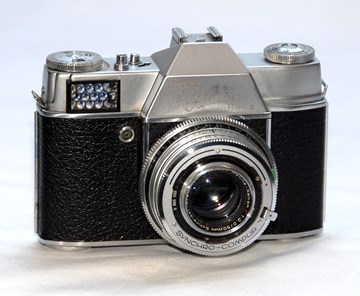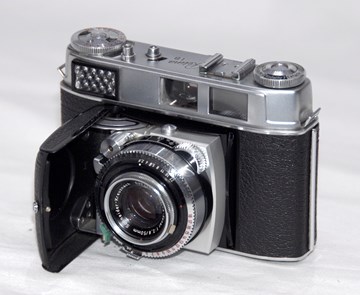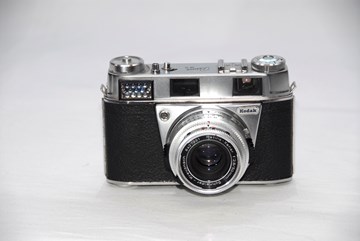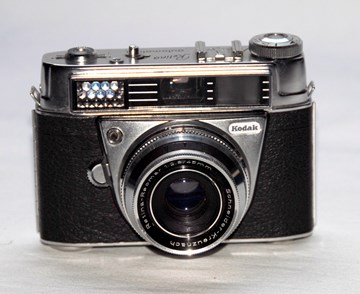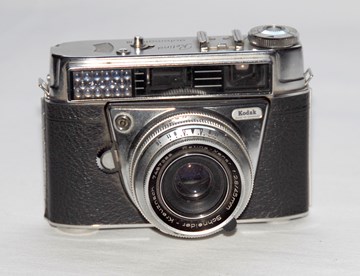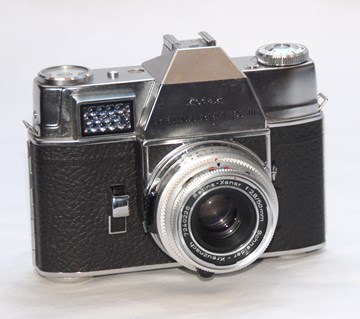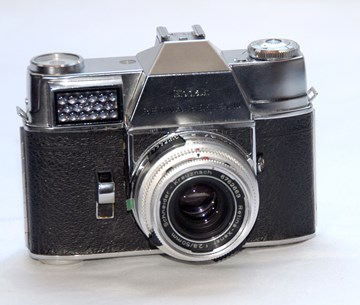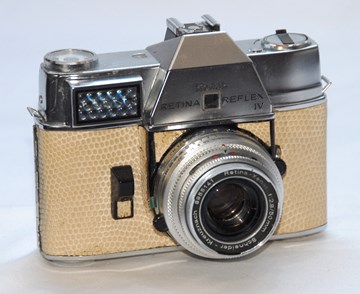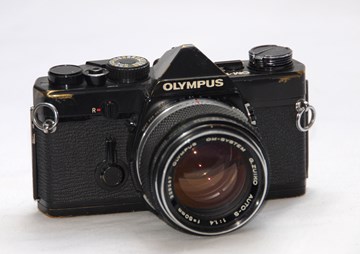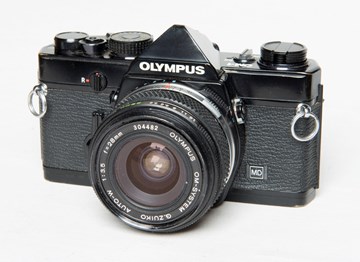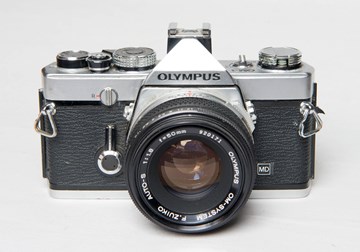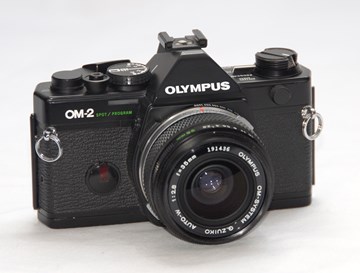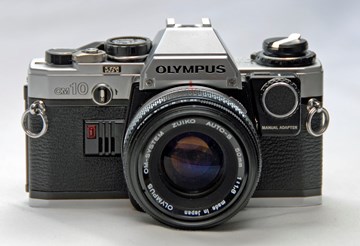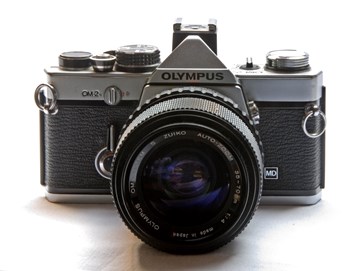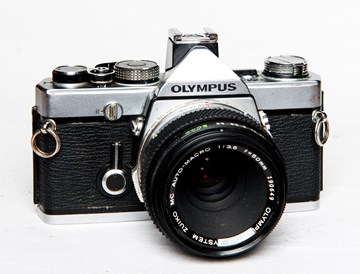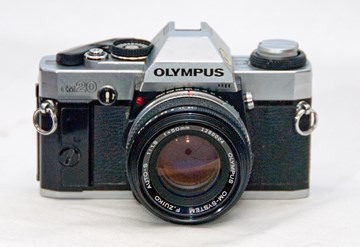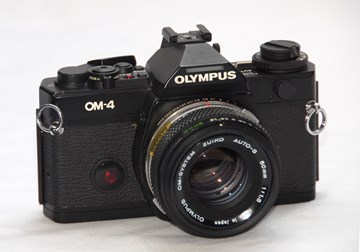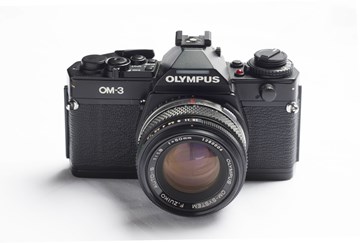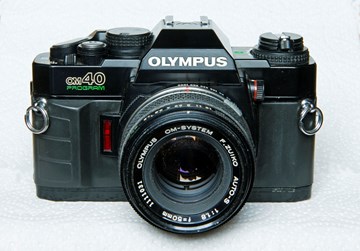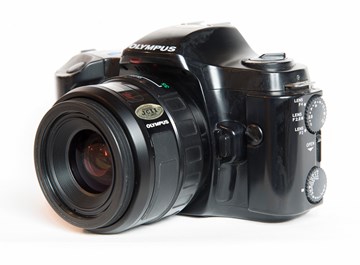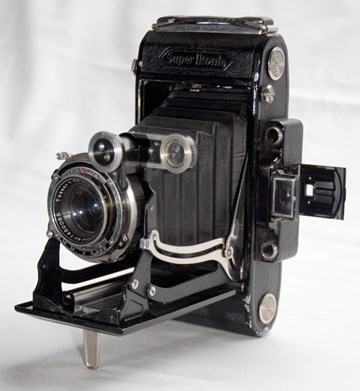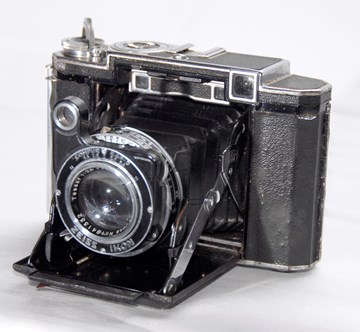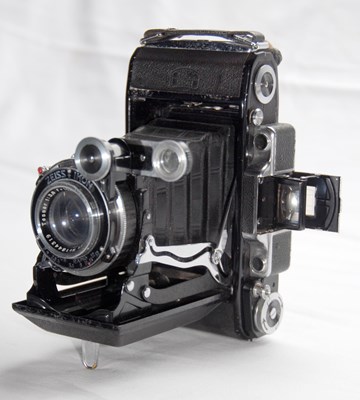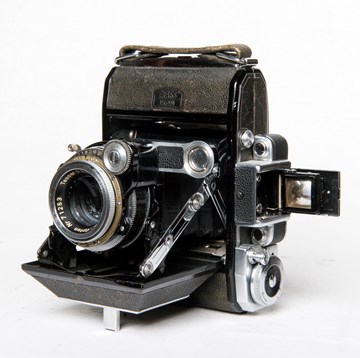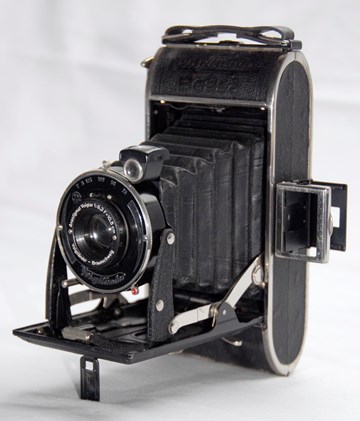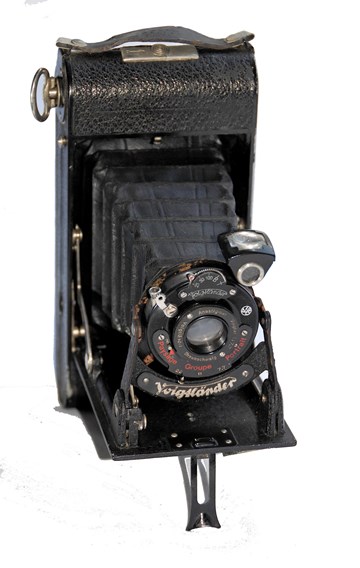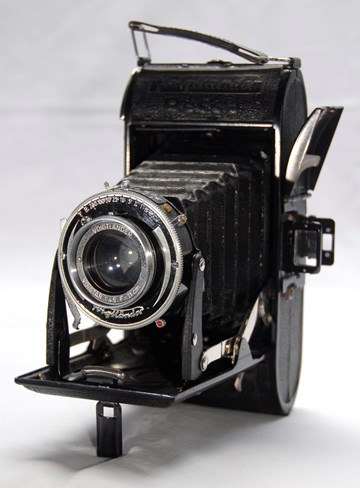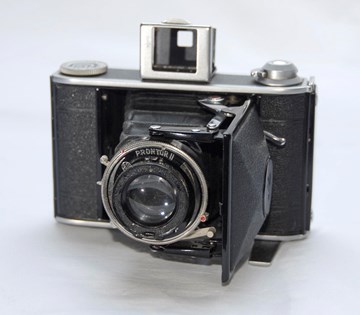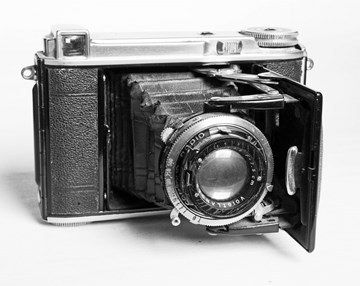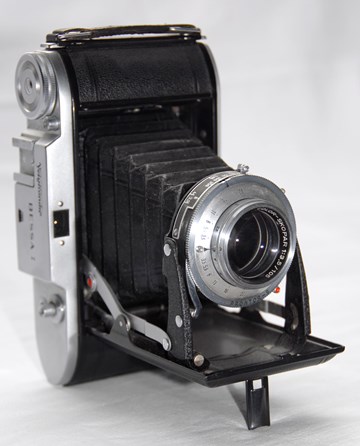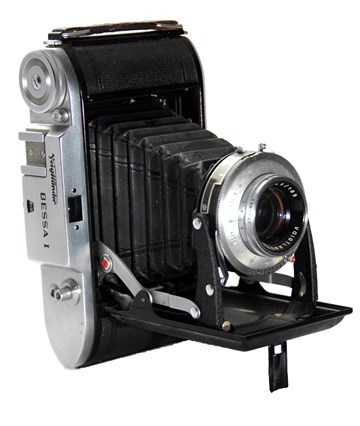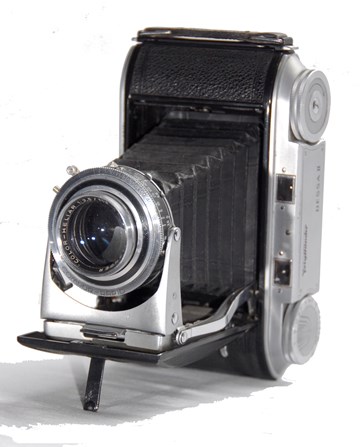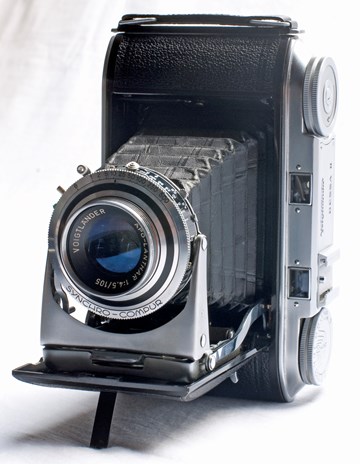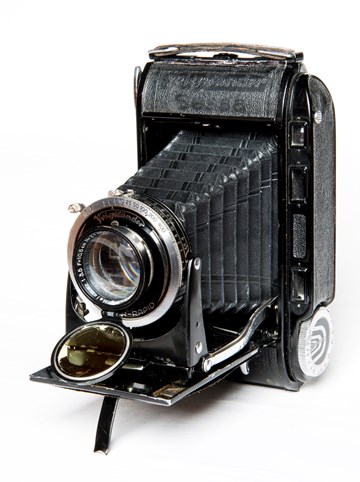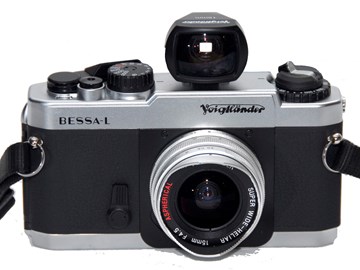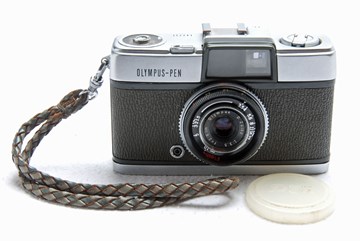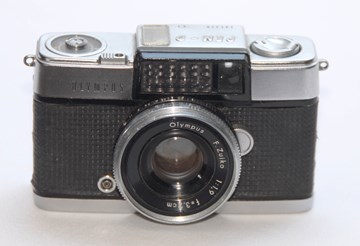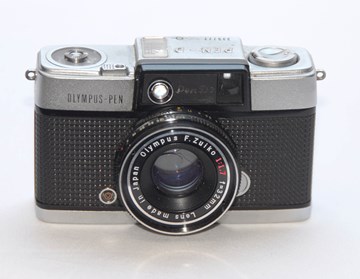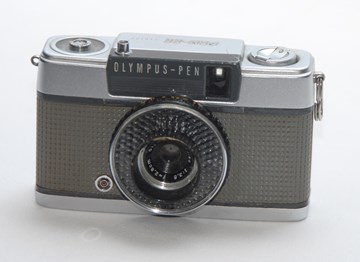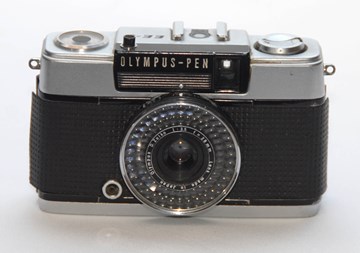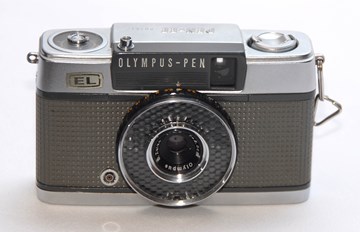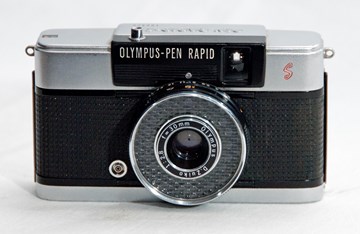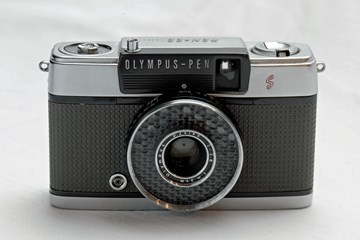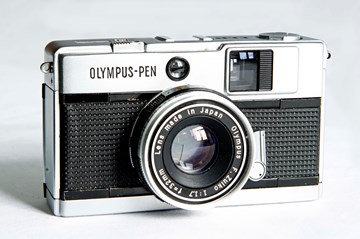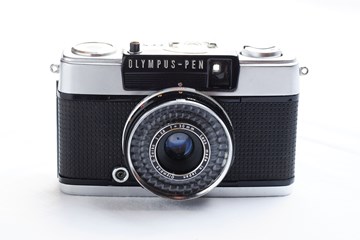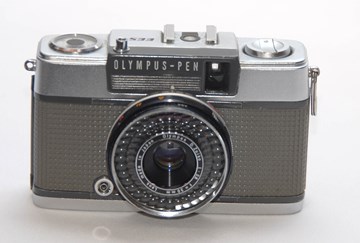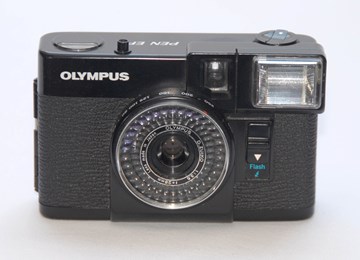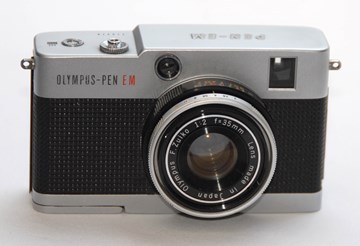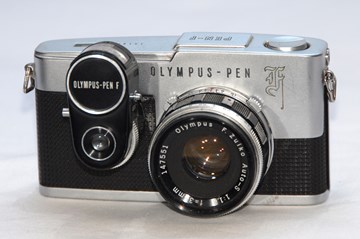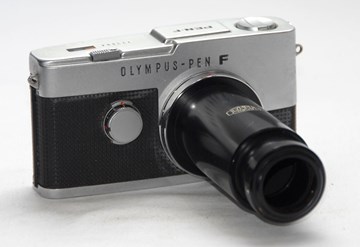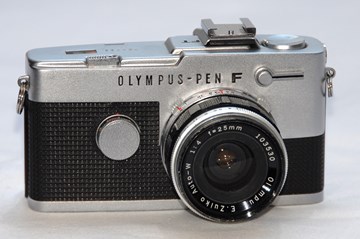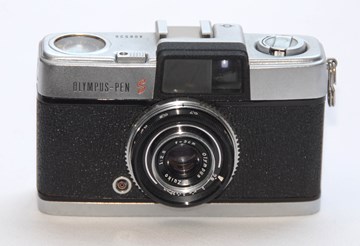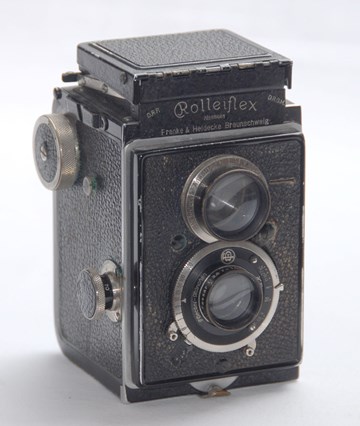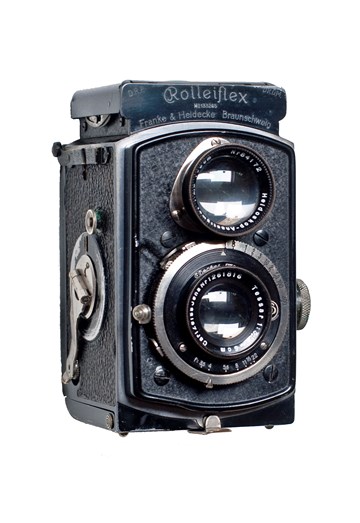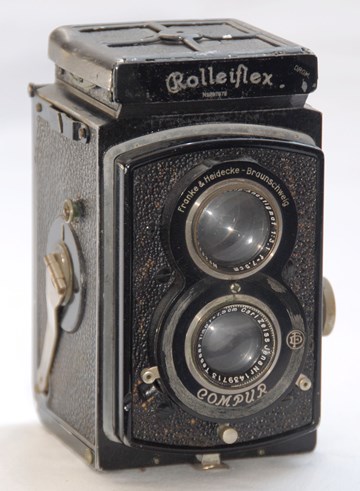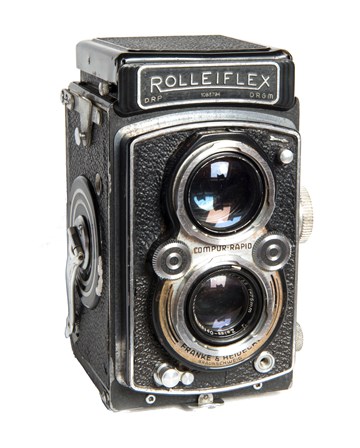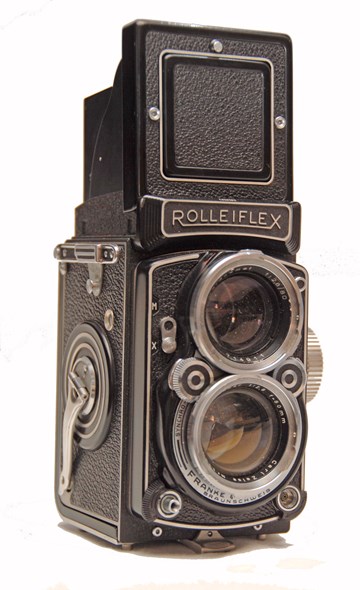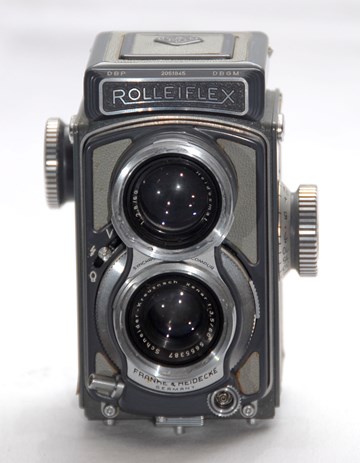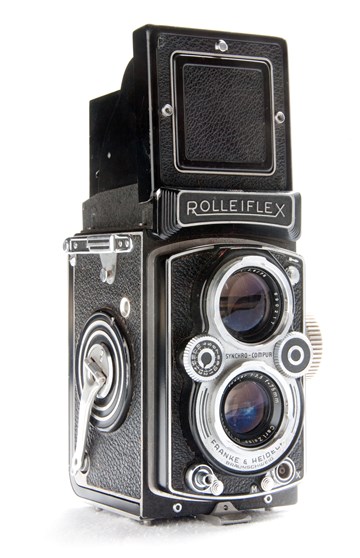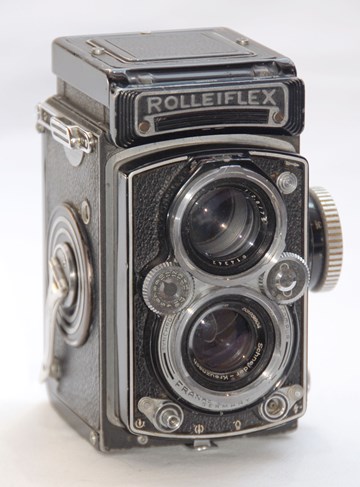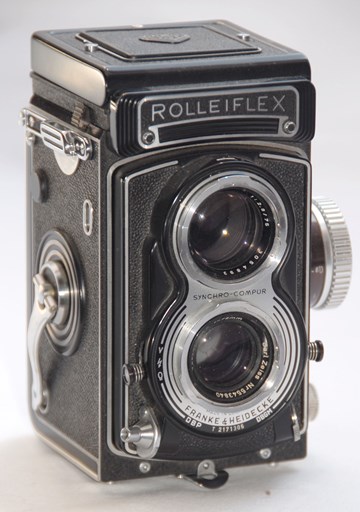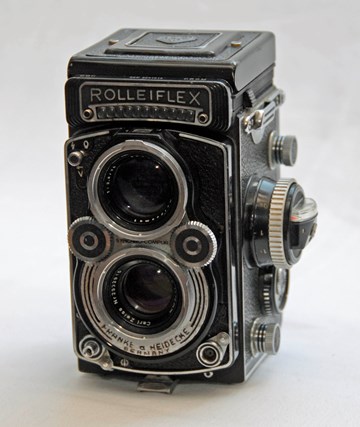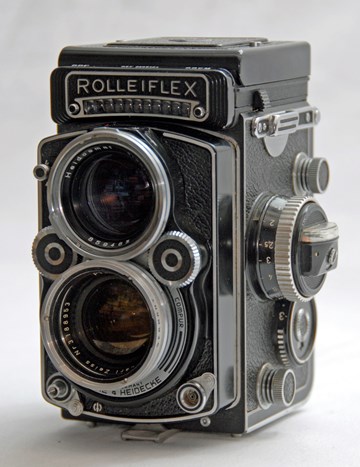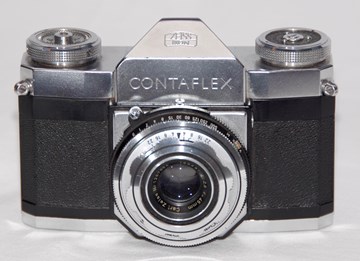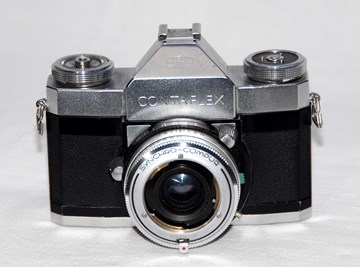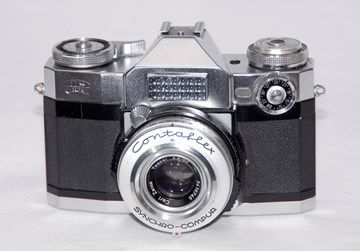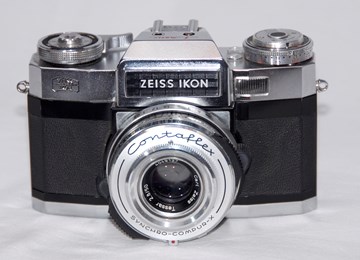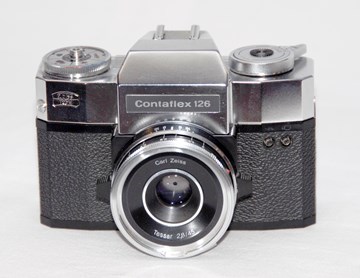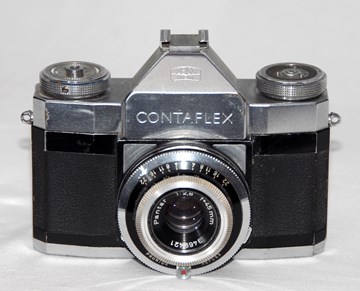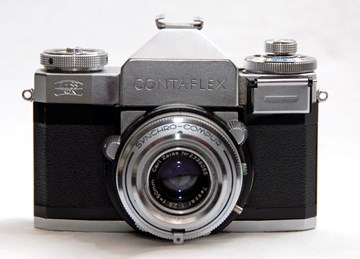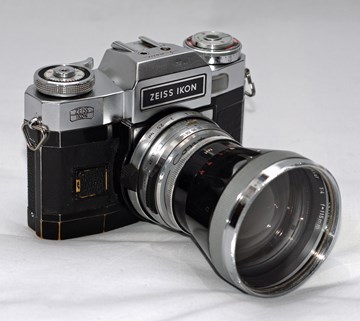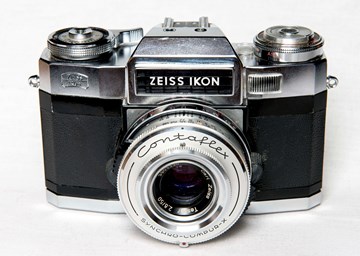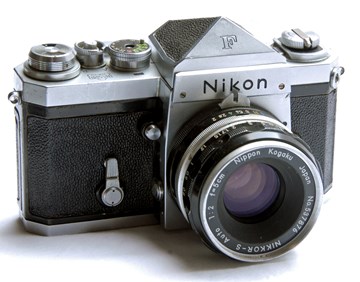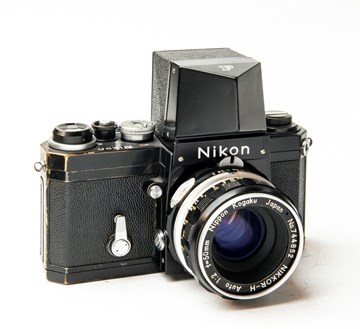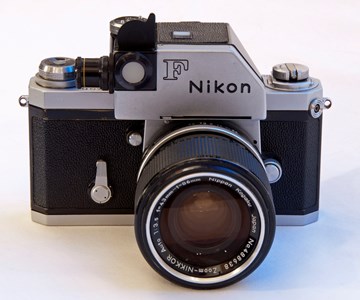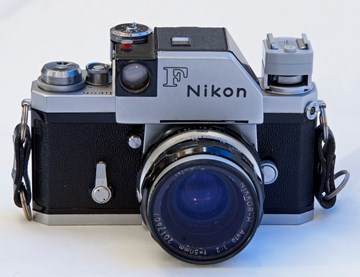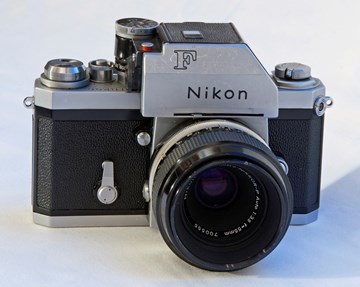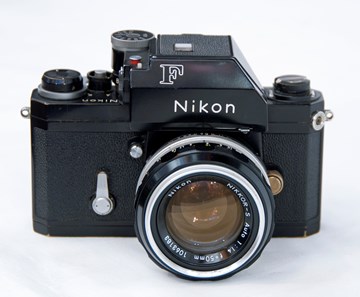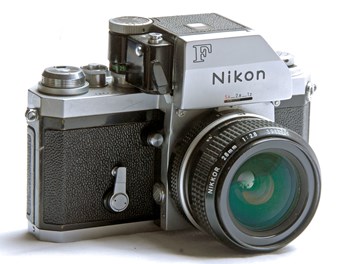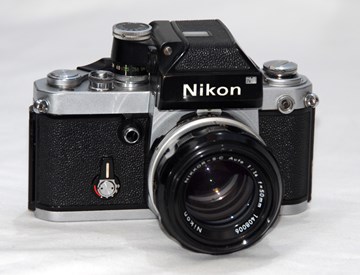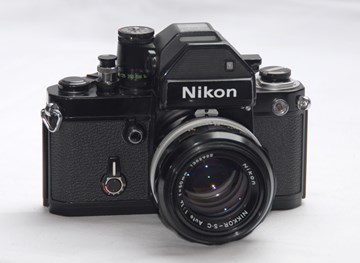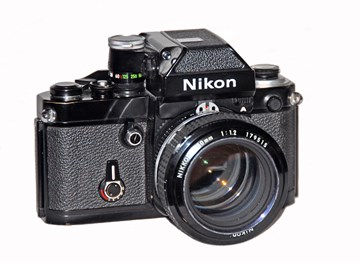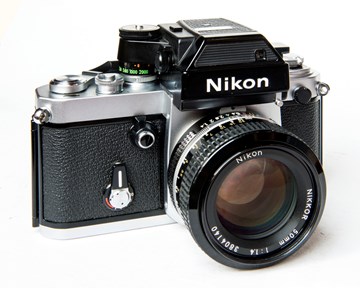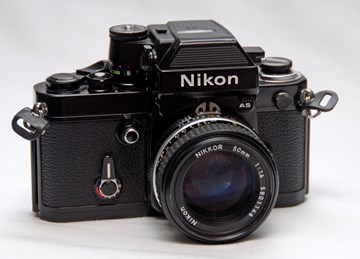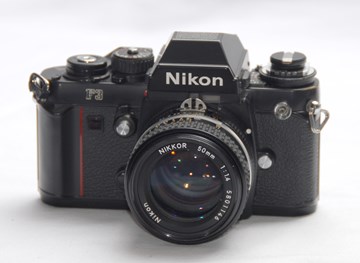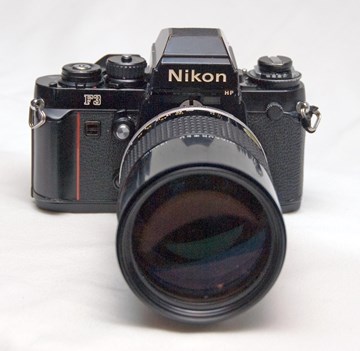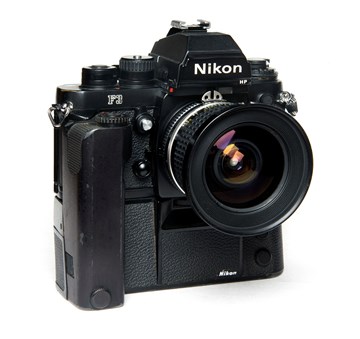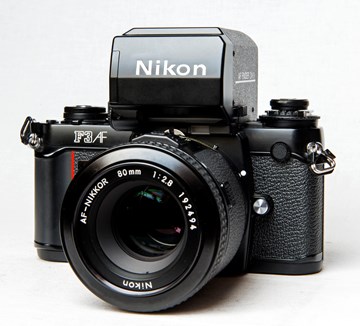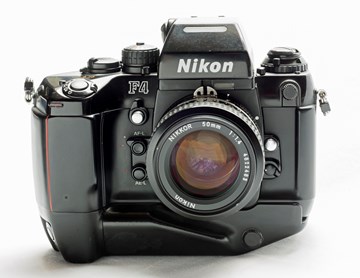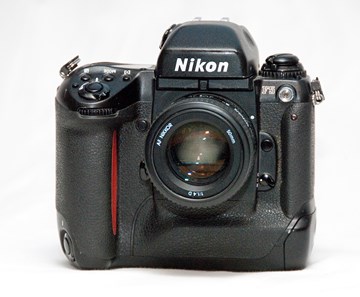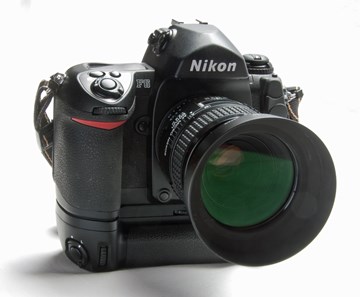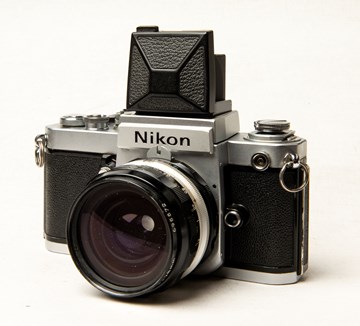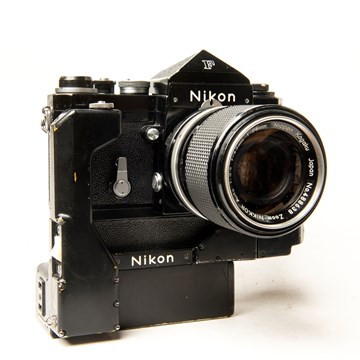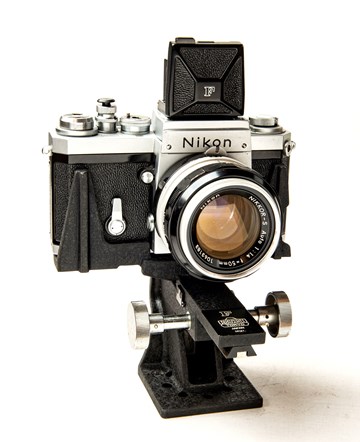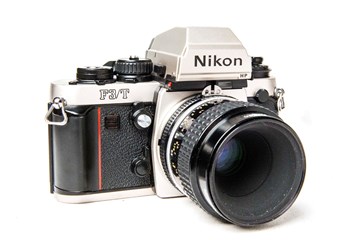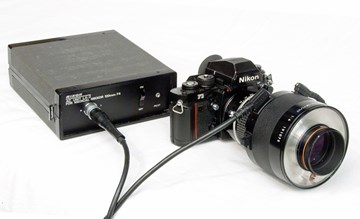
On this page, I present some cameras that are part of a series of the same basic name in the same manufacturer. (Eg the "Retina" series at Kodak). It is another form of presentation that shows the progressive development of the technicality and aesthetics of the basic model over the years. The series presented, which can still be completed, are my favorites.
The "Retina" by Kodak AG - stuttgart - Germany
The "OM" by Olympus - Japan
The "Super Ikonta" by Zeiss Ikon - Germany
The "Bessa" by Voigtländer - Germany
The "Pen" by Olympus - Japan
The "Rolleiflex" by Franke & Heidecke - Germany
The "Contaflex" by Zeiss Ikon - Stuttgart - Germany
The " F " by Nikon - Tokyo - Japan
The "Retina" series by Kodak AG - Stuttgart - Germany
In 1934, Dr. Nagel, whose company was acquired by Kodak, built the first "Retina" type 117 for Kodak AG in Stuttgart, Germany. To compete with Leica, which has already proved successful, this new device also uses the 35 mm film but already loaded into a cartridge developed by Kodak. The loading and unloading may therefore be done in daylight. The "Retina" was small, handy and equipped with shutters and optics of the German advanced industry in this field. The evolution of this series of cameras stopped with the production of " Retina Reflex IV ".
The "OM" series by Olympus - Japan
The first OM released is the M-1 in 1972 which attracted the wrath of Leitz who saw the "M" of his Leica copied. Olympus was forced to rename his camera and chose "OM-1" ("O" for Olympus and "M" for Masterpiece). The OM-1 of 1973 has everything to satisfy: lightweight, compact, new bayonet for the optics, clear sight, quite silent (pneumatic brake for the mirror), and motorizable, with a small intervention for the OM-1 only. It is a series of beautiful OM 35mm SLR cameras, especially the "black" models, but this is only a personal opinion ... Olympus has also planned a wide range of optics and accessories including adaptations for its microscopes .
The "Super Ikonta" series by Zeiss Ikon - Germany
From 1934 Zeiss Ikon perfected the already well-developed series of her foldings "Ikonta" by cameras of the same type but equipped with a coupled rangefinder to facilitate a precise focusing with an additional lens located above on the same plane as the optic. Then begins the Super Ikonta series. They are advanced devices equipped with the latest technical developments: a prestigious pair optical / shutter: Carl zeiss Tessar / Deckel Compur; A Newton viewfinder that will give a straightened image; A bellows made of special undulations for the internal ventilation which prevents the film to came out from its plan and a finish of high technical and aesthetic quality. The roll of film 120 will be used to give all possible horizontal or vertical formats: 4.5 × 6 cm, 6 × 6 cm or 6 × 9 cm. Super Ikonta production will continue from 1934 to 1960.
The "Bessa" series by Voigtländer - Germany
From 1929 to 1951 Voigtländer produced a series of folding cameras for roll film 120. All the optics are Voigtländer: Singlo, Voigtar, Skopar, Vaskar or Heliar and shutters Embezet, Pronto or Compur. As the production progresses, the viewfinders will evolve as well as the brightness of the optics and some models have a rangefinder. Some models have a removable filter hinged to the edge of the lens. Later, since 1996, under the name "Voigtlander", Cosina (Japan) continues the construction of cameras with the name "Bessa", as the Bessa L presented in this series.
The "Pen" series by Olympus - Japan
Cameras that use the 135 film (35 mm film) generally make photographs in the format 24 X 36 mm. This means that the height of the film is used for the 24 mm high, and that the length of the film is divided into portions of 36 mm long or a maximum of 36 views on a complete cartridge 135. The picture taken with the horizontal camera will have a rectangular format in length (type "landscape"). The "Pen" cameras from Olympus are half format: the height remains 24 mm but the length is 18 mm and not 36 mm, which makes it possible to make maximum 72 views per film instead of 36. The picture taken with the camera Horizontal will have a rectangular format in height (type "portrait"). The disadvantage is that the format of the shooting is smaller and therefore the film portion also. As a result, during the enlargement, the grains may appear more rapidly. Olympus was able to make a very nice series of small compact cameras ("Pen" like a pocket pen), very handy, well equipped at the optical level and equipped with high performance automation. At the end of production, there are even half-format reflex cameras, flags of the series, with interchangeable optics and with possibilities of uses in scientific fields, mainly medicine (endoscopy, photomicrography ...).
The "Rolleiflex" series by Franke & Heidecke - Germany
Cameras that have had immense success and often imitated, it is the "Rolleiflex", reflex TLR (Twin Lens Reflex) developed in 1929 by the two work companions Franke and Heidecke. The camera has a higher optics for aiming and lower for shooting. The large viewfinder gives on an image (return left/right) corresponding to the format 6 X 6 cm on film 120 or 4 X 4 cm on film 127. The film is unrolled vertically which gives a camera of cubic shape all In height but not bulky for a medium format. The Schneider or Carl Zeiss optics combined with a Deckel shutter made it an efficient, safe and impeccably finished camera. It has made the happiness of professional photographers and demanding amateurs! The "Rolleiflex" of the collection other than the bi-objective reflexes are not inserted in this series.
The Contaflex by Zeis Ikon - Stuttgart - Germany
We are in 1953 and it is time for Zeiss Ikon-Stuttgart, after the war 40-45 and the separating east / west camps, for compete the East Germany. Zeiss Ikon-Dresden (Pentacom later) had released in 1949 the Contax S and Ihagee-Dresden in 1950 its Exakta Varex. These cameras are single lens reflex (SLR) and use the 35 mm film. At that time Zeiss Ikon-Stuttgart continues to produce its Contax, a 35 mm rangefinder camera. The engineers who stayed to the west then undertake the production of a new 35 mm reflex camera (SLR): the Contaflex. It will be a series of 16 models produced between 1953 and 1972. There will be 3 families of Contaflex: 1 - Contaflex with fixed lens equipped with Tessar optics ; 2 - Contaflex equipped with Plantar optics; 3 - Contaflex equipped with Pro-Tessar optics.
I do not take into account here the excellent Contaflex (830/24) which is a TLR of 1935.
The professional " F " by Nikon - Tokyo - Japan
Since 1948 Nippon Kogaku (Japan) has produced eight models of rangefinder 35mm cameras, including the legendary "SP" from the factories from 1957 until 1964. Nippon Kogaku then tackles the market of 35mm reflex cameras with Interchangeable lens (SLR - Single Lens Reflex). Based on the SP, Nippon Kogaku will produce the Nikon F, the first of a series of cameras designed specifically for the professional market. The other fans of the brand will not be forgotten by other productions of Nikon reflex cameras less expensive (Nikkormat, FM, F-601 ...).
The Nikon F is produce in 1959, two years after the release of the SP which is still in production. This Nikon F will mark the history of photography and will change the habits of professional photographers. The SLR 35 mm that already existed at other brands will become a reference. That was a succes for Nippon Kogaku ( "Nikon" in 1988) with this first model, and the others will follow as the technical advances applied to these cameras : increasing shutter speed, measurement of light through Lens (TTL), automation of exposure, motorization, autofocus, etc.). A constant point for all 35 mm Nikon SLR cameras is the bayonet F which serves to fix the optics, the base of which will remain immutable always until today. The advantage is therefore the almost total compatibility of all the brand's objectives with the obvious limitations associated with improvements in mechanical and electronic communications between the optics and the case (such as, for example, automatic focusing). The Nikon F series is in fact not very large since there are 6 basic models, from the nikon F to the Nikon F6. But there are several variations of these models which make that the whole is counted to more than 20 apparatuses of different identifications between 1959 and 2004.

